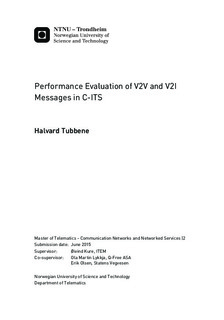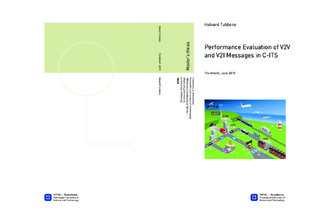| dc.description.abstract | The Cooperative Intelligent Transport System (C-ITS), a system where vehicles cooperate in order to improve traffic safety and efficiency, have recently received a lot of attention. There are several standardization initiatives for the C-ITS, including ETSI TC ITS in Europe and their GeoNetworking protocol. The two primary standardized messages for V2V/V2I (Vehicle-to-Vehicle/Infrastructure) communication are the periodic beacons called Cooperative Awareness Messages (CAM) and the event-triggered warning messages, Decentralized Environment Notifica- tion Messages (DENM). A 10 MHz channel is allocated for exchange of these messages in the 5.9 GHz band, referred to as ETSI G5 in Europe. The utilized access technology is the IEEE 802.11p.
The frequency of the CAMs are determined by an adaptive algorithm that adjusts the frequency based on the current surroundings. Unlike CAMs, are the dynamic DENMs forwarded by surrounding vehicles through a multi-hop paradigm. This feature extends the communication range for the DENMs, but may also cause a lot of additional overhead and duplicate traffic in the already limited capacity network. The ability to achieve sufficient delivery-rates at a low cost is a major concern for the DENMs. Several forwarding algorithms with various characteristics are standardized for the purpose of efficiently disseminate DENMs. The challenge for these algorithms is to ensure good performance for a variety of situations, including difficult road topologies, varying vehicle-densities and decreased transmission conditions.
This thesis examines the performance of these messages in various situations through simulations and an analytic study. The advantages as well as the challenges of the different features are discussed and evaluated. The results of the simulations clearly indicates how the achievement of high delivery-rates is determined by the choice of forwarding algorithm. This decision should be carefully considered based on the specific characteristics of the event. The report emphasises how the ability to chose optimal DENM parameter-values are essential for the performance. The paper also includes a thorough description of the necessary technical details of the V2V/V2I messages, in addition to an evaluation of several proposed enhancement techniques. | |

